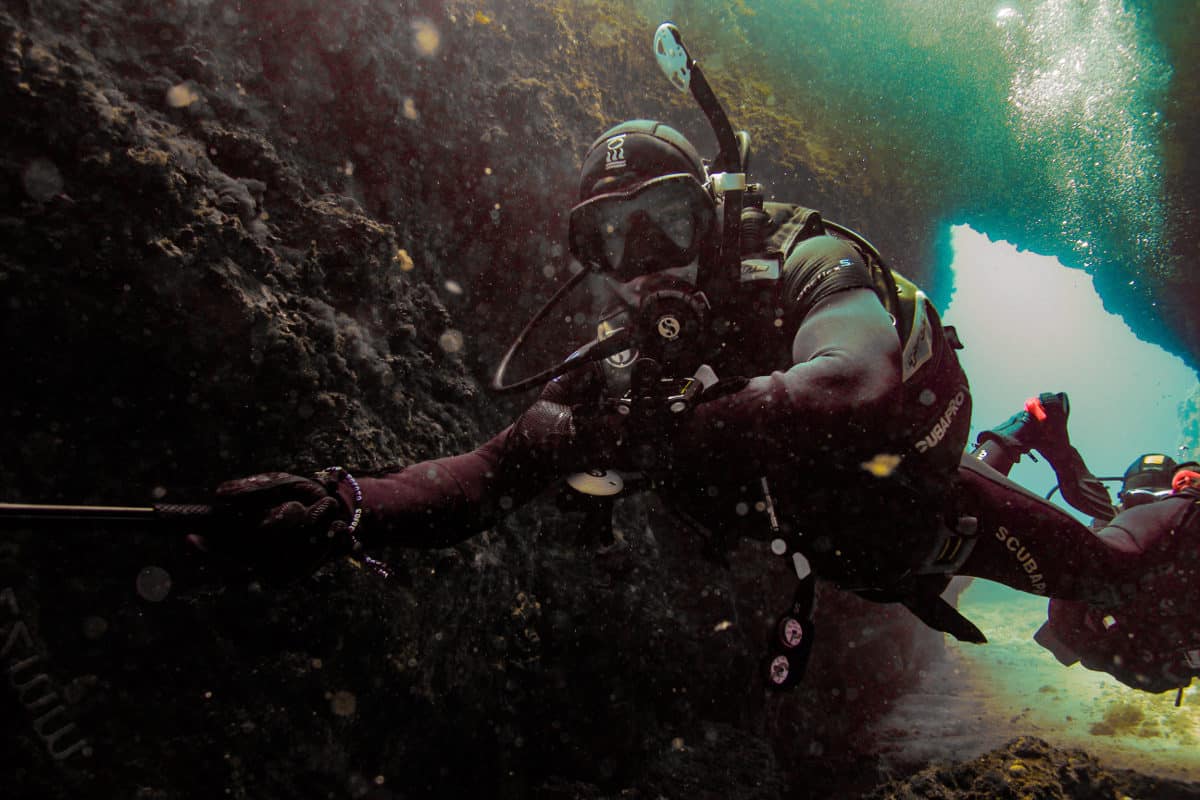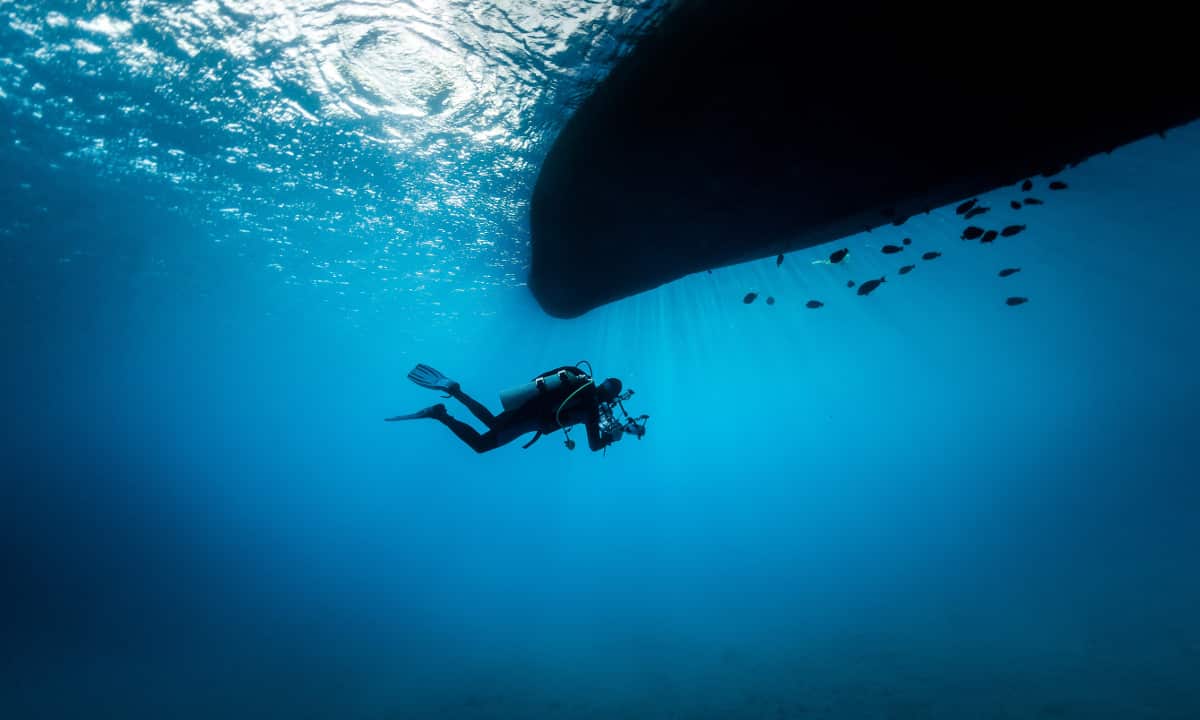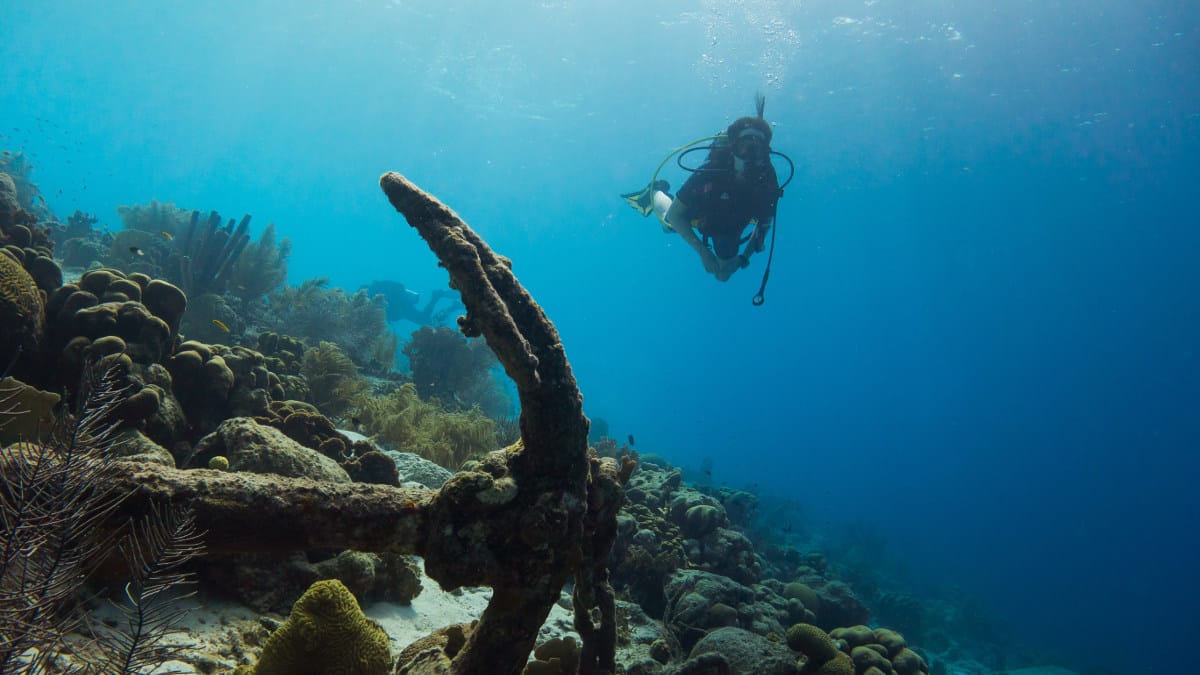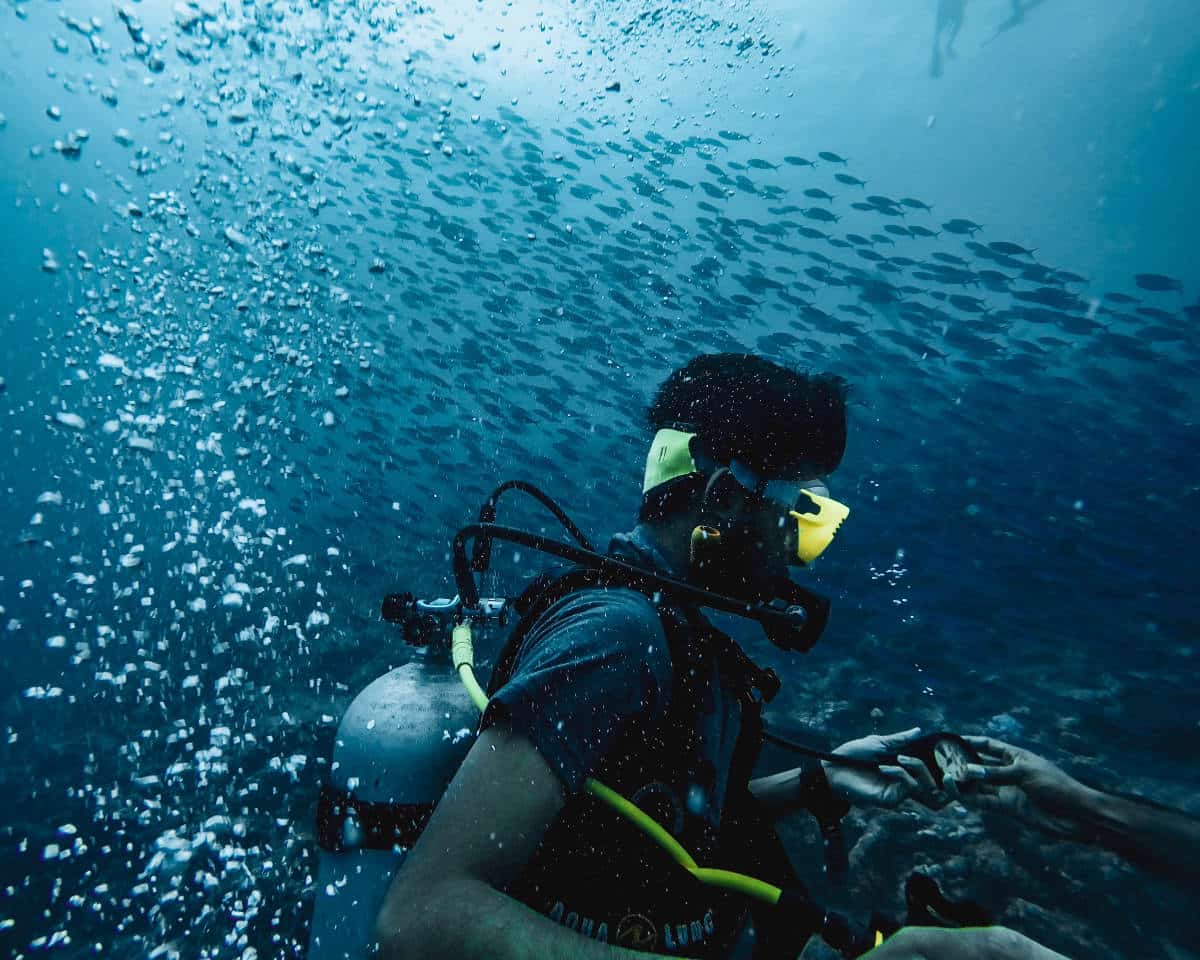What is snorkelling?
Snorkelling is a sport that involves moving on the surface of the water but unlike other sports like surfing, to practice it you need fins, a mask and tube to breathe continuously, and in cold waters it is also advisable to be equipped with a diving suit (or shorty) to keep the upper part of the body warm.
The objective of snorkelling is to explore the seabed from the surface, which is done in shallow areas to see the background clearly.
Because it is so simple, it can be practiced by anyone of any age without having to be accompanied by a professional, and it is not necessary to have previous knowledge.
What is scuba diving?
Scuba diving – also called diving – is much more complex than snorkelling and therefore you must be accompanied by a professional who, before the dive, will explain the use of the material and the steps to follow during the dive, which requires prior training.
It consists of submerging completely in the water and being able to enjoy the seabed with the help of professional equipment more expensive than in snorkelling, this one consists of fins, visor, hydrostatic vest and oxygen tank. Focusing on diving, it should be noted that the most common system is the scuba diving system (a regulator powered by one or more bottles of compressed air). This system allows to reduce the high pressure of the bottled compressed air to the pressure of the water that surrounds the diver, so that he can breathe normally without the need for cables and air supply pipes from the surface.
Although similar, there are many characteristics differentiating them.
Scuba diving history
Diving arises from man curiosity to discover the wonders hidden at the bottom of the sea. The main difficulties when diving were to hold your breath when you started to reach a certain depth and the fact that you saw the marine environment blurred when you submerged.
The early diver sensed that these problems were not insurmountable and found that if he submerged with sufficient weight, he dived more easily and reached greater depth, and that if that weight was attached to him he could stay with less effort at that depth.
In this totally intuitive way he began to use the apnea method, which although still valid today has left space for more innovative methods to dive.
A multitude of serious eye injuries made them come to the conclusion that if they could isolate their eyes from contact with the water creating a natural environment, ie air, the problem could be solved. Thus, they created wooden masks with polished tortoise shell in guise of glass. From then on, they could start diving ‘free lung’ thanks to the ballast and the glasses.
In <em>1837</em> the waterproof suit was created keeping the body dry <em>(wet suit</em>). And thanks to these discoveries they could start carrying out jobs such as rescuing sunken ships, among others.

What is a diving baptism?
The diving baptism is the first experience that someone has diving, an initiation into the world of scuba diving.
First you start with a little theoretical explanation about how to move underwater, how to breathe and you are given some rules to be taken into account. Then you can do the dive, which is usually done about 6-8 meters deep.
This baptism is necessary for anyone who wants to enter the world of diving, it is some kind of test to see if diving is really your thing or not, and it will always be accompanied by an instructor.
The only requirements for a baptism is to be in good health <em>(no respiratory or heart problems)</em>.Now that we know what a baptism is, we can continue with the requirements that must be met to start a training course.
What are the requirements to learn how to dive?
To carry out a training course in diving you have to be healthy – and bring an approved medical certificate that confirms it – and show your ability to swim.
There are different diving organisations and affiliated schools and the age requirements may vary according to the centres.
Here in Mallorca there are several diving centres in which the minimum age for courses is usually 10 <em>(although in the rest of Spain 16 is normally the minimum age), but we must take into account that minors must have parental authorisation.
For younger children, aged 8 and 9, there is a course called PADI Bubblemaker – maximum depth of 2 meters – in which in addition to having fun with underwater games such as frisbee and torpedoes, the children will learn on how to use the equipment, how to dive and how to clean the regulator and the mask.
Benefits of diving
To finish, we want to highlight the benefits of diving. There are more people initiated to this sport all the time, since it is a practice in which you are usually accompanied, providing security and confidence to others. In general terms, the benefits are:
- Increasing lung capacity.
- Providing relaxation and tranquility.
- Improving confidence.
- Helping control anxiety and stress.
- Improving psychomotor skills.
After reading this post, I’m sure you’ll find plenty of reasons to snorkel and dive this summer!







